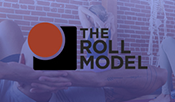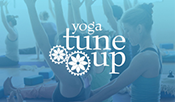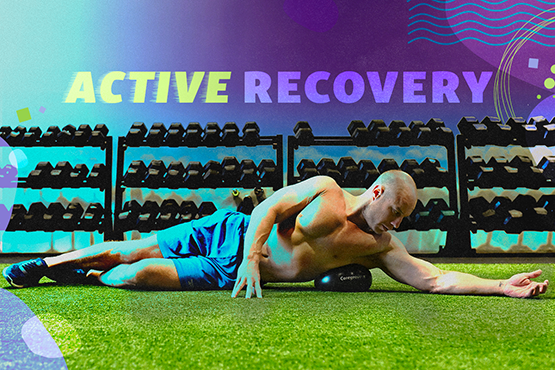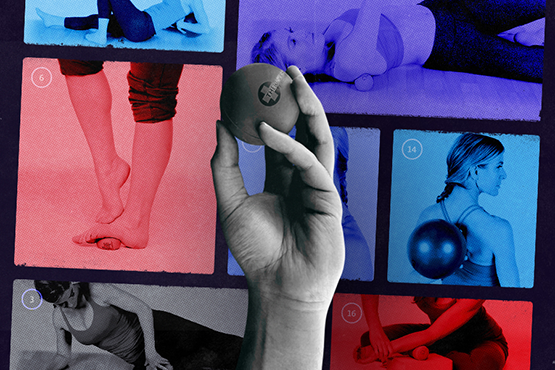
The hamstring group of muscles is part of the posterior chain of the hip/ leg. They are not as large as the quadriceps on the anterior side of the body; they have more length to them and are more tubular than broad. However they are equally important, as they are responsible for hip extension and knee flexion. Hence they are used a lot for every day walking and running. The hamstrings are antagonists to the quadriceps muscles. The muscles that work in synergy with the hamstrings are gluteus maximus, sartorius, gracilis and the gastrocnemius.

All three hamstrings originate at the ischial tuberosity; they broaden out and then become slimmer as they get closer to the knee, ultimately ending in long thin tendons posterior to the knee. All three insert at different points. The biceps femoris long head inserts at the head of the fibula, and the biceps femoris short head at the lateral lip of the linea aspera. The semitendinosus inserts on the proximal medial shaft of the tibia. The semimembranosus inserts on the posterior aspect of medial condyle of the tibia. The latter two insertions along with the sartorius and gracilis form a duck foot like insertion called the pes anserinus.
Because the hamstrings are biarticular, they will affect the health of the knee, hip and even back. Most athletes who are tight in their hamstrings can suffer a host of problems. For example, when squatting with a heavy weight, they will not be able to lower their hips past 90 degrees. This keeps them working in a ‘safe’ mid range zone, but exasperates the issue as the hamstring will not be fully lengthened. Then when it comes time to explode out of the squat, the full length of the hamstring muscles are not utilized. This can get into a vicious circle, ending in weak and tight hamstrings.
Tight hamstrings also shed light on knee pain. Again, let’s take the bottom of a heavy squat example. If the hamstrings are too tight and do not allow full hip extension, the quadriceps will take over from the inefficient hamstrings, putting a tremendous load and strain on the knee. Remember, all four quadriceps converge to form a single tendon above the knee that attaches to the top and sides of the patella, before attaching via the patellar ligament to the tibial tuberosity. So if the quadriceps group works needlessly overtime, it’s going to affect the knee.
And there’s more! Back pain also can be attributed to tight hamstrings. Since the hamstrings are attached to the ischial tuberosity, tightness can tilt the pelvis back. When this happens the lumbar vertebrae flex forward, adding compression to the vertebral discs. It gets worse if we bend forward as the flexion is then coming from the lumbar spine.
Strengthening your hamstrings or keeping them strong is just as important. Most dominance in sports comes from hip extension/explosion. Take a runner as an example. If a runner continually loads his anterior chain while running, he will weaken his hamstrings. This pertains to proper running technique, whereby the hamstrings are asked to fire every time the leg is picked up off the ground. The inability to fire the hamstrings, can cause the hamstrings to tear, as they will not be able to take the constant load developed by the contracting quadriceps and the momentum that the hip extension generates. There will be a drop in running speed as the hip flexors jam up, and the hamstrings contract earlier in the stride.
If you’re looking for a great hamstring stretch (among other things), check back for a clip on Friday!
Discover our Quickfix Rx: KneeHab DVD











A very clear explanation of how agonist and antagonist muscles need to work in concert in order to perform tasks from the most mundane to high performance. Simply put, our hamstrings need attention, strength building, and stretch inducing techniques to alleviate pain, release tension, and perform like the rockstars that they are.
“Not as large as the quads” ! with the skin all over everything it’s hard to tell but that picture helps a lot. I guess it makes sense with our movement being forward mainly; we don’t practice as much extension at the hips, as we do flexion at the hips. Also the flexion at the knee (closing the joint of the knee) would take a smaller muscle compared to the muscle needed to flex the whole leg. (If I’ve got that all correct :S ).
This is very important for all athletes to know and understand. Our knees seem fragile and are often the first joints to suffer an injury but with these tips hopefully, we can lessen that risk!
Great anatomy lesson here, I used to have pretty bad knee pain and the moment I started dedicating more time to my hamstrings it all changed. Getting my hamstrings firing up has brought so much more power into my movements as well, in both weightlifting and in yoga.
This is a great anatomy lesson regarding hamstrings and knees. When I started with patellofemoral osteoarthritis, my PT focused on my hamstrings and gluts. However I had great range of motion in hamstrings and spent most of my time strengthening my gluts. Now I spend significant time training my posterior chain and have significantly reduced my knee pain.
Yes, lots of people forget about these super-important muscles on the back of our bodies. It’s easy to sit a lot in our workplace or at home and this weakens hamstrings and causes the back problems you write about.
What a detailed description of the hamstrings! I enjoyed learning about how much tight and weak hamstrings can affect the low back, hips, and knees. So many of my clients have tight hamstrings, and knowing how much this affects their range of motion (like in a squat), or how they can get injured running, is quite useful! The daily position for most people of sitting on a chair all day does not help this issue. Thank you for the informative article!
I had never thought of my hamstring muscles affecting my functional movement so much – a student in one of my classes complains of knee pain when squatting – I will have her read this blog
Wow, crazy that the hamstrings can affect so many areas of the body. I had considered the way that tight hamstrings affect a forward bend, but not the way they can chronically tilt the pelvis to the posterior and placing greater pressure on parts of the lumbar vertebrae as they are forced into flexion. It is also interesting to learn the way that people with weak hamstrings will overly rely on their quadriceps.. causing issues down the road.
A great reminder to keep the hamstrings healthy and strong to not only prevent pain but to power up locomotion!
my knee issues are mostly probably related to tight hamstrings too!! I shall get working on it!! 😉
Great article, so much injury in sports are due to thight harmstring. Let’s start taking care of them.
My hamstrings are tight (from too much sitting for work and driving), and it makes it challenging for me to keep my pelvis position neutral in some yoga poses and exercises. I think it’s also likely responsible for the pain I get behind my knee from time to time. Thanks for highlighting the many consequences of tight hamstrings. I’m going to renew my focus on stretching and strengthening my hamstrings!
Thanks Yasmen,
I have really tight hamstrings and it often makes it difficult to get my pelvis into the correct tilt for yoga poses. This could also be a contributing factor as to why I also have knee pain. I’m looking forward to watching the video clip on how to get a great hamstring stretch.
This has been one of the biggies for me. I am a runner who does not take the time to stretch out my hamstrings. YTU has provided some great activities to stretch and strengthen this area and along with using the YTU balls, this has helped alleviate some of the knee pain I have had.
As a runner, this is definitely thought provoking as I do experience periodic knee pain. I will definitely incorporate more hamstring strengthening into my regime. Thank you!
Excellent reminder of how often it is something above or below that is the root of the pain.
Hi Chelsea,
Thanks for your comments on the article. I think you answered your own question. If you can feel your hammies are tight, then they are tight. My rule of thumb is to work the entire region as they are all connected and muscles that do not slide and glide over each other informs other muscles as well. Look at the adductors, external and internal hip rotators, quads and even the calves.
Hi Yasmen,
Thank you for this post, and all the anatomical information you provided. I have been having trouble with my right low back, glutes, and knee. I’ve also noticed that on this side my hamstrings are way tighter. In addition, to the weight lifting example you gave, what can be some other causes of strained or injured hamstrings? I am unsure if my discomfort is originating from my piriformis or hamstrings. Also, is it unusual to only experience this tightness on one side?
Thanks,
Chelsea
Great detail of the different potential causes of knee pain and back pain and an important reminder that the source of pain is often not the origin of the pain.
I am working with a friend right now who is dealing with knee and back pain, and the Quickfix Rx: KneeHab DVD sounds perfect for him. We have been working on hamstring and quad stretches (he is 55 and hasn’t actively stretched in almost 25 years), and this article / that DVD will be perfect material for him to review and progress with at home. So often people talk like their hamstrings or quads are all one muscle, and you highlight really well how separate they are, and the need to use them through their full range of motion. Thanks!
Great article on the potential of knee pain in relation to hamstring tightness.
Yasmen – Thank you for this insight! I have notoriously tight hamstrings and have struggled on and off with knee pain over the years. I do step aerobics a lot and have always attributed my knee pain to that practice, but it never occurred to me that there could be a connection between my knee pain and my tight hamstrings. I’m going to do some conscientious squats to test my range of motion to see if my hamstrings are the likely culprit.
A valuable article and great information to take into consideration when I receive clients with knee pain. You have also inspired me to take a closer look at the mechanics of my personal squat, and dive into how I am truly using those muscles
This was great information, I knew tight hamstrings were associated with low back issues, but I never put the connection with the knee. I have tight hamstrings and had an issues with my inner left knee. So I was working the sartorious not the hamstrings.c
I feel certain that tight and weak hamstrings can contribute to knee pain. My quadriceps were so much stronger! Once I began giving my hammies more attention, the knee pain drastically reduced!
I’ve been experiencing some knee pain every since I broke my femur in a skiing accident many years ago. It’s interesting to me to think about how the quads, which were totally emaciated after the cast and had to be rehabiliated might now be a contributor to the knee pain. I also think there is ligament damage, but I’m going to keep exploring this in my YTU classes and see what I can find. The pain only really flares up when I go hiking, and specifically when I hike down the mountain…hello quads!
Great Article! Yes, confirming hamstrings definitely effect knee health. I drive several hours a day and my right leg is in contraction. My knee health is always a challenge. Just started with Jill’s “Knee Hab DVD”.
Clients often come to me with knee pain but I rarely think of the hamstrings as the culprit. This article will help me keep the whole leg in mind when looking at the knees, especially for all the flexy yogis I work with who tend to strengthen their quadriceps so much and only stretch their hamstrings. I’m wondering if this might also be the case of my friend who has recently running and is experiencing knee pain? Ultimately, I’m still confused as to how to asses the cause of knee pain, especially now that I understand how the hamstrings could potentially be involved.
Thanks for this,
Elise
I first heard about the connection between knee pain and hamstrings last spring when I took part in a workshop with Kathryn Bruni-Young. She said that people with knees that make cracking or popping sounds (that’s me!) have weak hamstrings. I’m still trying to figure out why… Any idea? Anyway, I then realised that my hamstrings were actually weak and that was why my running technique was not optimal. Since then, I’ve been trying to make them stronger and hope that will hep me run a little faster.
Thank you for this interesting article!
This is a great blog. It can really help the average person understand the hamstrings and the value to maintain strength and flexibility in them. As an LMP I hear a lot of people complain about knee pain, and or low back pain for that matter and its very rare for someone to assume that their hamstrings are the cause of either of these symptoms. Its very important for us to educate our students on compensation patterns, tightness and weakness in their hamstings. Even though the hamstrings are not as large as the quads, they are equally powerful, if not a little more so in my opinion. Great blog, thank you!
I am currently recovering from a hamstring injury nothing major but (consistent tightness and pinching pain while trying to lengthen the hamstrings) it seems to be taking forever. Any recommendations on exercises I can do to help speed up the recovery process. Should I focus more on ball rolling on the IT band and quads? I’m feeling frustrated.
Knee pain can be caused by a sudden injury, an overuse injury, or by an underlying condition, such as arthritis. Treatment will vary depending on the cause. Symptoms of knee injury can include pain, swelling, and stiffness. i do love how you dig into other cause that might trigger the knee pain. i do ask my clint to consult with the specialist before i help them.
I will definitely be reading some of the other articles and links suggested here, as I’m starting to see that hamstring issues are probably the root of times I end up in pain – this helped a lot! But I am just learning all of these muscles and insertions and congruencies so forgive me if this question is silly! If hamstrings are not working at their best and the quads have to overwork, this seems to say that there with be anterior knee pain. What if the knee pain is in the back, behind the knee (in my book, what looks like the plantaris and popliteus muscles)? Does that mean the quads aren’t working enough and the hamstrings are having to overwork so the problem is really with the quads? I go in and out of times where I have pretty extreme pain behind my knees (to the point of limping through the grocery store post even just a gentle yoga flow class), but it’s not consistent and happens maybe every 6ish months, with nothing seeming to particularly trigger it. Have asked a lot of questions about it, but never really discovered an answer. This has got me thinking though!
Thanks Yasmen! I was wondering if you have a good que, or way to scale this skill, to help trained people to fire the hamstrings more at the bottom of a squat? I’m not sure that I fully understand how to turn on the hams at that point of the moment. I believe that I’m very guilt of only using quads, which lead to my own knee pain.
Thanks for such an informative article! I have perpetually tight hamstrings, and its quite fascinating to hear what an all around role they can play in overall body health!
Thank you for your post, I am an avid tennis player and have recently pulled a hamstring and have been recuperating it.
In the meantime while it heals, I think diving into the knee work with the balls will help. Great post!
As I have been fighting some knee pain, I have been regularly hitting up the it band, supra-patellar pouch, TFL, and sartorius. I have been neglecting the idea of the hamstrings playing a role in this. I will see if this clears up additional slack to the area!
Thanks Amanda,
Most functional movement where you use your posterior chain like running, squatting, lunging will strengthen your hamstrings. However if you have a knee issue, this can be challenging. You can box squat that would help, keeping the box high and the shins vertical. The other way to go is to try and isolate the muscles like on a GHD raise machine.
This is a really interesting article. I have always believed I had a bad knee but never really thought about what causes the bad knee or what could be contributing to make it worse. When I do certain yoga poses (trigonasana on my bad knee side) I can feel it in my hamstrings. Do you have any recommendations on how to strengthen your hamstrings knowing you have a bad knee?
Excellent information about the hamstrings. I knew tight hamstrings could cause back pain but knee pain was new to me. I remember a friend who was performing a clean and jerk movement and blew out both his knees. Ouch! Maybe those hammies were a little too tight.
I am currently doing my YTU Teacher 1 Training and would love to apply these movements to Crossfit. I think that it is completely applicable and your article on knee pain and the hamstring is so relevant to the repetitive Olympic lifting that is apart of so many high intensity workouts these day.I love the concept that our bodies can only move as far as our restrictions. I think that so often we concentrate on the area that is in pain and not on the muscles that are strained, support and surround the compromised area.
Thanks Lisa,
I love to squat. Front squats with the barbell in a front rack position will use the quads a bit more. But in a more used back squat, where you put the weight on your back, the hammies have to do most of the work. If a person is using their quads too much in a back or air squat, they may be initiating the movement by driving the knees forward first, instead of creating torque (ext’ rotating hips as feet stay parallel) and letting the butt go back a bit while maintaining the integrity of the spine. Knees should never hurt in squating.
This was a great read. I knew that overworked Quads could cause knee problems, but I didn’t link tight hamstrings to that same problem.
I’ve always looked at the anterior aspect of the thigh, noting to clients that they do too many squats, strengthen the Vastis on the lateral side more than the Vastis on the medial side hence pulling on the knee cap causing such pain. I didn’t realize that a tight hamstring could cause the Quad to overwork, as you say, from coming out of a deep squat.
Interesting. And thanks for the information.
Hi Clara and Paula,
Thanks for posting on my article. I wrote the article, because we don’t always think of hamstrings as the culprit for knee pain. However in both your cases, I would look at the obvious culprit – the quads. Pain in the back of your knee could
be your miniscus too. I would use the balls to role out the quads muscles in a cross fiber manner and use a roller on the IT band. On the roller to lie on your side perpendicular to the roller and rock toward your back ribs and then forward instead of up and down. Look at the whole picture from the psoas, illiacus, adductors and quads.
Hope that helps.
Yasmen, I viewed your most recent post on asymmetrical uttanasana and loved it! I’m a big fan of that pose (In fact, I’m certain that I left a comment on that post.). My hamstrings are quite flexible, and forward fold isn’t a highly challenging pose for me. Unfortunately, I still experience knee pain in some poses that require knee joint flexion (IE: warrior I/II, extended side angle). After a few breaths, I have to pull out of the pose for a break. Could this be a result of my hamstrings not being entirely flexible? Are you aware of any potential causes of my burning knee joints?
Great post! I am sill trying to understand the relationship between the muscles on my left side of the body:-) Every day I get a referral pattern in a different area. I started spinning a few months ago and noticed that my hamstrings are taking a load of tightness that is clearly affecting my knees. if I sit on the floor in Vajrasana for a few minutes I am not able to get up right away. The back of my knee locks and the hamstrings freeze at the origin. I need a few times of bending and straightening the knee in order to be able to step the foot down. Any ideas what can be causing this referral pattern?
Interesting article! I have a torn menicus and now my hamstrings and hips are tight. It begs the question which came first?! I do have a tendency to work my quads more than other muscle groups, squat after squat after squat! It just shows how everything really is connected in the body!
As soon as i saw the title of this article… i had to read further. Ive been having knee pain on my right knee for a few months now and couldnt find the cause of the problem. Now reading your article– i think i may have the answer. I squat very heavy on the smith machine and the leg press. With the want to constantly improve my weight to see results i may be 1. tightening up my hamstrings too much, so my quads are taking all the work and straining my knee. It completely makes sense now– from over working my quadriceps group i am affecting my knee. Thank you for explaining that so clearly!
Thank you Nan and Elissa for your comments. It’s amazing how Jill has shown us that we can take care of ourselves and others with a little bit of knowledge and the right tools!
Great article. So interesting to see how all muscles are connected and affect each other. I’m a dancer and a few years ago had knee surgery after tearing my MCL. While healing I had to restrengthen all the hamstring, quad, and hip muscles. Especially all of those little stabilization muscles! Now if I ever neglect stretching after dancing, I tend to get knee, hip, or back pain from the tight muscles all being neglected. Strengthening and stretching is key!
This was a good article, since it gave me a different point of view on what to look at when I have a client with knee pain. I have definitely tended to look first at the quadriceps. I know about the connection between low back issues and tight hamstrings, but now the article makes intuitive sense and provides a useful perspective for me, a personal trainer.
Thank you all for your posts. As you may have guessed I work with a lot of very athletic folks, who get very tight after their work outs. However, if you do have very loose hamstrings, and you only do yoga, you may want to mix it up a bit. I personally do CrossFit, which basically throws everything in the basket. Flexibility and strength are on two ends of a stick and you have to find a balance.
So appreciate this in-depth post on hammies!! While still digesting all the anatomy present in this reaction, your illumination of the “biarticular” hamstring makes so much sense. I used to run in my teens, but by 19 or so, a faint but pervasive knee pain that showed up after every run alerted me that something was up. Sure the knee pain could have resulted from a host of reasons; nonetheless your post gives me a more WHOLE sense of the biomechanic picture. Will definitely try YTU balls on the ischal tuberosities..!
My head is exploding on the complexity of the hamstrings! Thank you for this article. It shows that everything is connected!! I believe I had a back injury (running in high heels while catching a flight) maybe, because my weight was thrown forward it made me not be able to fire those hammies! Thoughts?
I have a couple of clients with knee problems and this article has shed some light on where I need to focus my attention as I train them. I’m hoping they will be able to see results within 6 weeks.
I loved this article about the hamstrings! I feel I have the total opposite problem as most people – as a yoga instructor, I have extremely open hamstrings and sometimes I get nervous that I will eventually tear my bicep femoris from being TOO open. Do you have any suggestions that would strengthen the area, without putting too much pressure on my knees?
Great article!
Great blog on hamstrings. I conquer!. SO important to keep your body in balance. Using Jill’s balls has improved my routine. I roll out my IT Bands and activate my glutes before each leg workout, which have saved my knees.
Terrific article on the complexity of the hamstring group in relationship to the knee, back, and the opposing quadriceps muscles. As an avid cyclist / spinner I find it is easy to defer to quadriceps strength as those are the muscle being coaxed to ‘bully’ the work during those kinds of activities. Hence, I have suffered from tight and weaker hamstring and low back muscles, as well as occasional knee pain. Until reading this article it didn’t occur to me that my knee pain might very well be due to weaker hamstring muscles. Though I have used the YTU balls for relief in the tightened hamstring and low back areas, I will pay closer attention to strengthening the hamstring muscles in a more conscious fashion. Over time, hopefully I will take some of the power out of the overworked anterior thigh and create more power with the posterior muscles of the thigh to alleviate knee discomfort.
Loved reading this blog, great information and context offered here! I just want to emphasize the point made in this article about the importance of strengething the hamstrings in addition to just flexing them. I have long hamstrings and can easily enter most poses, but I have realized that they are not as strong as the other surrounding muscles, which causes problems in the pelvis and lower back. There are many YTU exercises I do for strengthening, but ball rolling them after a good day’s workout is just priceless!
After much self discovery, I too came to the conclusion ( based on my pain accountability), that my hamstrings are to blame for my tight hips and knees.
I started thinking that by dong some light jogging, i could warm my muscles up and then, I could do some deep stretches. Also, I feel the abdomen plays a key role, in hamstring tightness.
Thanks for your comment Pooja. As an athlete, I never try and stretch my hamstrings cold. You can role on the ball at the attachment on the ischial tuberosity, that wont hurt anything and does loosen them up, but if I am going to sprint for example, I warm up my whole posterior chain in a dynamic way and leave the passive and active static kind of stretching for after. I also feel if you are going to take a joint or muscle to end range, it’s not going to budge much if there is no heat/blood flowing in the area.
It’s really interesting to see where all three hamstrings originate and insert. I’ve noticed that my hamstrings are flexible in certain positions and not in others. Likely a difference in flexibility in one hamstring vs the others. I have a consistent (everyday) yoga practice. I’ve noticed that when I do yoga after a run I have much greater flexibility in my hamstrings than when I begin a yoga practice cold. This is likely due to the heat generated by my body post run. Is it better to stretch the hamstrings when in this heated state? Will this help me to increase my flexibility while cold? A yoga instructor once told me that it is actually better to do yoga or stretch when cold despite the more limited range of motion because this is my “true self.” Would love to hear your thoughts on this. Thank you!